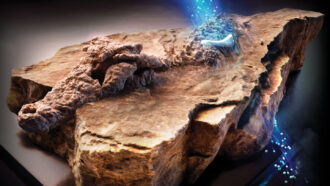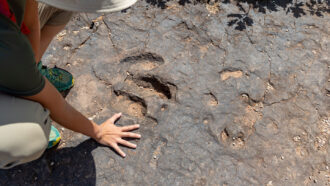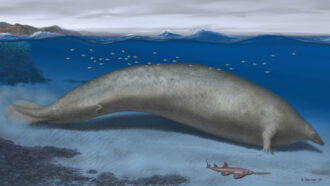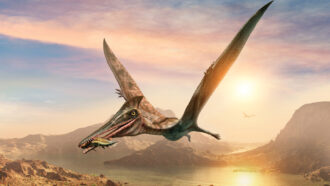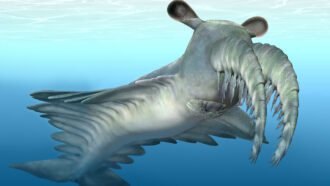Dino find ruffles feathers
Nearly-perfect, newfound dinosaur fossil reveals more dinos were feathered than previously thought
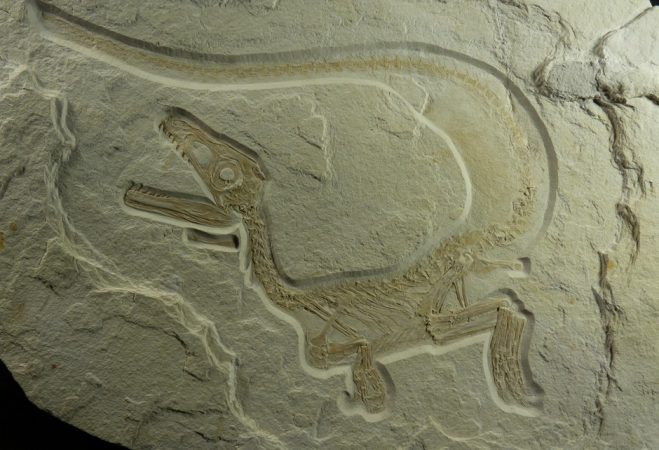
A skeleton unearthed in Germany may change the way we think about dinosaurs. The fossil includes the head, body and tail of a type of meat-eating dino called a megalosaur that lived about 150 million years ago. This well-preserved specimen contains something else — feathers that gave the dino a shaggy coat and fuzzy tail.
“It looks like it was a pretty fluffy kind of thing,” Mark Norell told Science News. “Kind of like a baby chick.” Norell, a paleontologist at the American Museum of Natural History in New York City, investigated the new fossil. Paleontologists study ancient rocks, looking for signs of the plants and animals that lived millions of years ago.
Feathered dinos have been discovered before. But previous ones were coelurosaurs, a type of dinosaur closely related to modern birds. Megalosaurs like the newfound fossil are only distantly related to birds. The discovery of feathers on a megalosaur suggests that plumage may have been normal for dinosaurs. (Imagine dinos like T. Rex dressed up as Big Bird.)
Researchers suspect the newfound dinosaur was a young one. It measures only about 70 centimeters (a little less than 28 inches) long, about the width of the aisle on a school bus. Some adult megalosaurs grew to be as much as 10 meters long, the length of an entire school bus. Scientists have named the new species Sciurumimus albersdoerferi.
Feathers aren’t the only reason scientists are celebrating the new fossil. Displaying an open mouth, arched back and curving tail, the intact remains show very clearly what the dinosaur looked like. Plus, the bones aren’t broken. Some even have dinosaur flesh on them.
“It’s a gorgeous specimen,” paleontologist Luis Chiappe of the Natural History Museum of Los Angeles County told Science News. “Probably one of the best meat-eating dinosaurs ever preserved.” Chiappe did not work on the new study.
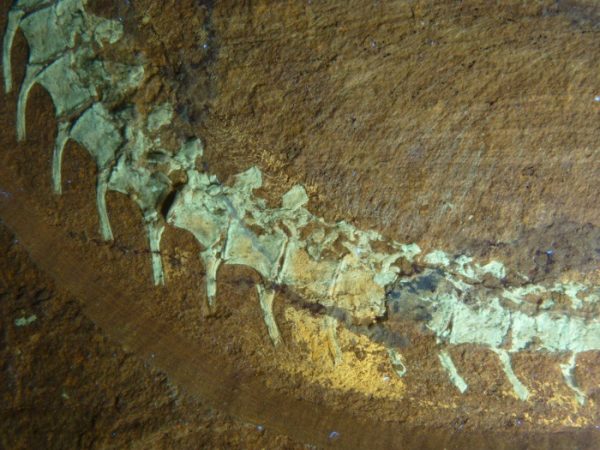
patches of preserved skin in yellow and feathers as faint, bluish scratches. H. Tischlinger/Jura Museum Eichstatt
The dinosaur’s plumage actually looks more like hair. Scientists call these structures “protofeathers.” Even though they differ in appearance from the feathers on modern birds, the two types are made from the same stuff. Researchers hope to learn what color feathers adorned the young megalosaurus, but to find out they’ll have to break off and analyze a bit of the fossil.
And if you’re a paleontologist with your hands on a nearly-perfect specimen, that’s about the last thing you’d want to do. So they’ll hold off — for now.
Power Words
megalosaurus A large, carnivorous, bipedal (walked on two legs) dinosaur of the mid-Jurassic period, whose remains have been found in Europe.
paleontology The branch of science concerned with fossil animals and plants.
fossil The remains or impression of a prehistoric organism preserved in petrified form or as a mold or cast in rock.
coelurosaur A small, slender, bipedal, carnivorous dinosaur with long forelimbs. Scientists believe birds evolved from coelurosaurs.


